Dnepr launches five Japanese satellites (original) (raw)
Searching for details:
The author of this page will appreciate comments, corrections and imagery related to the subject. Please contact Anatoly Zak.
Related pages:
While the Russian-Ukrainian conflict drags on, engineering teams from two former Soviet republics cooperated on the launch of a converted ballistic missile to deliver a cluster of Japanese Earth-watching satellites. It was the 21st mission for the Russian-Ukrainian venture.
Previous page: Dnepr's 20th mission

Above: Japan's Advanced Satellite with New system Architecture for Observation, ASNARO, (top left) was the primary payload during Dnepr's 21st launch. Four secondary satellites were also delivered.
Please help to keep this site open and current! The pace of our development depends primarily on the level of support from our readers.
Launch
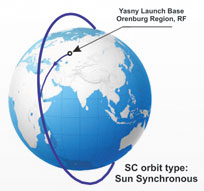 A liftoff of the Dnepr launch vehicle took place on November 6, 2014, at 10:35:49 Moscow Time (07:35 UTC, 2:35 a.m. EST), at the Dombarovsky launch site. The rocket carried Japanese ASNARO-1 Earth-watching satellite as its primary cargo and a cluster of secondary remote-sensing payloads: Hodoyoshi-1, ChubuSat-1, Tsubame and QSAT-EOS satellites.
A liftoff of the Dnepr launch vehicle took place on November 6, 2014, at 10:35:49 Moscow Time (07:35 UTC, 2:35 a.m. EST), at the Dombarovsky launch site. The rocket carried Japanese ASNARO-1 Earth-watching satellite as its primary cargo and a cluster of secondary remote-sensing payloads: Hodoyoshi-1, ChubuSat-1, Tsubame and QSAT-EOS satellites.
After a vertical liftoff from a hardened Cold War-era underground silo, a converted R-36M UTTKh missile headed south toward the Indian Ocean in order to insert its cargo into a near-polar, Sun-synchronous orbit with an inclination 97.4 degrees toward the Equator and an altitude of 530 kilometers. It will take satellites around 95 minutes to make a single revolution around the planet.
According to a post-launch press-release of the Kosmotras company, which markets Dnepr to commercial customers around the world, all satellites were released into their correct orbits.
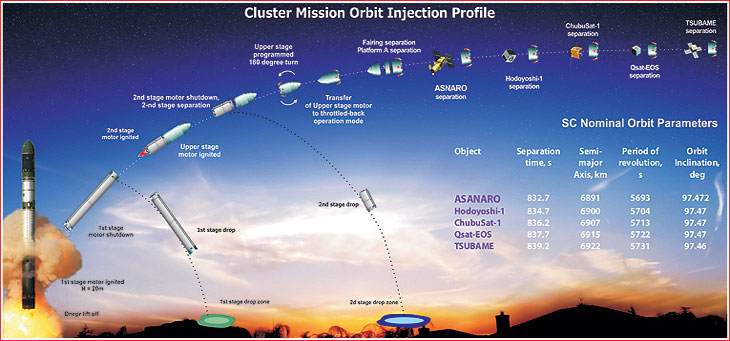
Mission history
The mission was originally expected at the end of 2012 and was later postponed to 2013. The launch was then scheduled for September 18, October 8 and October 30, 2014. On Oct. 27, 2014, Russia issued a warning for air traffic to stay away from a rocket stage drop zone in the Indian Ocean on Nov. 6, 2014.
According to the Russian military, the RS-20B ICBM for the ASNARO-1 launch was manufactured in 1983 and was in operation for 24 years. It was decomissioned from the Russian Strategic Missile Forces, RVSN, in 2008.
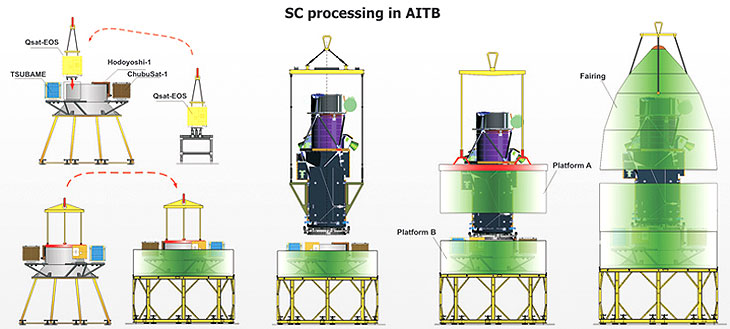
Above: Pre-launch processing and integeration of Asnaro-1 satellite and secondary payloads with the payload section of a Dnepr launcher. Credit: Kosmotras
A summary of Dnepr's payloads:
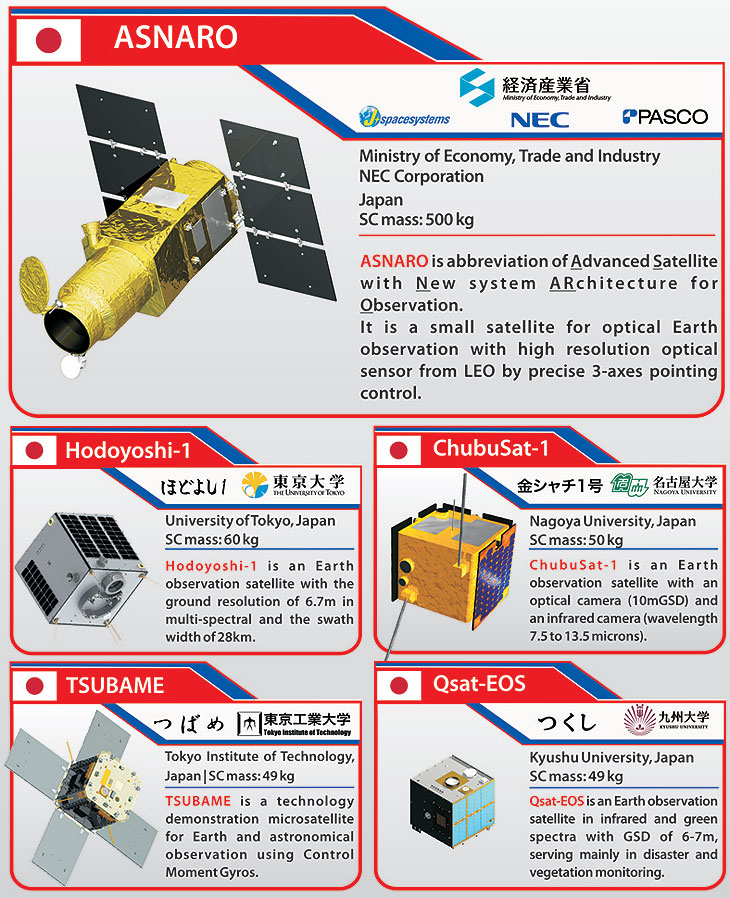
| Spacecraft | Client/developer | Mass |
|---|---|---|
| ASNARO-1 | Ministry of Economy, Trade and Industry, METI; Japan Space Systems, NEC | 495 kilograms |
| ChubuSat-1 | Nagoya University, Daido University, MASTT (Meiyu Aerospace Support Technology Team) | ~50 kilograms |
| Hodoyoshi-1 | University of Tokyo, Axelspace Corporation | 60 kilograms |
| QSAT-EOS | Kyushu University, Kyushu Institute of Technology, Saga University, Kagoshima University; Institute for Q-shu (Pioneers of Space) | 49 kilograms |
| Tsubame | Tokyo Institute of Technology | 49 kilograms |
ASNARO-1 satellite
The ASNARO stands for Advanced Satellite with New system ARchitecture for Observation. The project started in 2008, when Japan's New Energy and Industrial Technology Development Organization, NEDO, awarded a contract to NEC Corporation and Japan Space Systems for a project aimed to miniaturize high-resolution observation satellites, build them quickly and, most importantly, cheaply. The resulting 400-kilogram spacecraft had to match its considerably larger predecessors in a key specification of remote-sensing satellites -- 0.5 meters of GSD, or Grand Sampling Distance.
Within the ASNARO project, NEC Corporation was responsible for the development and manufacturing of the satellite, while Japan Space Systems led the overall management of the project.
Specifications of the ASNARO satellite:
| Liftoff mass, including... | 495 kilograms |
|---|---|
| 200 kilograms | |
| Spacecraft platform mass, including... | 295 kilograms |
| 45 kilograms | |
| Orbit type, altitude, inclination | Sun-synchronous, 540 kilometers, 97.4 degrees |
Secondary payloads
Four secondary payloads on the 21st Dnepr mission were also designed for Earth observation, but had considerably less ambitious designs:
Tsubame
Tsubame (swallow) is an experimental micro-satellite designed for the remote-sensing of the Earth and for high-energy astrophysics experiments. Laboratory for Space Systems, LSS, in Matunaga, a part of Tokyo Institute of Technology worked on the spacecraft for a decade and it became its fourth satellite. The spacecraft was originally scheduled for launch as a piggy-back cargo on the Japanese H-2A rocket in 2011 or 2012 but was eventually switched to Dnepr.
Hodoyoshi-1
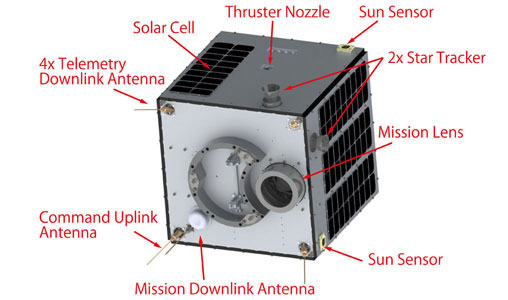
The Hodoyoshi-1 or simply "Hodo" satellite was designed for taking images discerning details as small as 6.8 meters on the ground. Four such satellites were developed jointly by the University of Tokyo and Next Generation Space System Technology Association, NESTRA. The Japanese government funded the work within its New Paradigm of Space Development and Utilization by nano-satellite program.
At the University of Tokyo, the project was led by Shinichi Nakasuka, a professor at the Department of Aeronautics and Astronautics, part of the Graduate School of Engineering.
ChubuSat-1
The Chubu region in central Japan has been a home of many aerospace companies which collaborated on the ChubuSat project. The satellite is featuring an optical and an infrared camera and can reach a resolution of 10 meters. Space debris sensors and amateur radios are also onboard. It was expected to operate in orbit up to a year.
Specifications of the ChubuSat-1 satellite:
| Liftoff mass, including... | approximately 50 kilograms |
|---|---|
| Dimensions | 58 by 55 by 50 centimeters |
| Attitude control | Three-axis, 5 / 0.1-degree accuracy |
| Communications | S-band, Ku-band |
| Resolution on the ground | 7 meters |
| Field of view | 10 kilometers by 10 kilometers |
| Spectral bands | Visible (450-550 nanometers); Near-infrared (780-920 nanometers) |
QSAT-EOS
QSAT-EOS stands for KYUshu SATellite for Earth Observation System. Like its other three siblings onboard Dnepr, it is a small satellite designed to photograph Earth's surface and transmit images to the ground. The satellite will also measure the Earth's magnetic field, will try to detect small debris in orbit and observe vapor in the atmosphere at high altitudes. its applications include disaster monitoring and vegetation control.
The satellite is shaped as 50-centimeter cube with a mass of 50 kilograms. QSAT-EOS was to be inserted into a 530-kilometer orbit with an inclination 97.5 degrees toward the Equator.
Specifications of the QSAT-EOS satellite:
| Liftoff mass, including... | 50 kilograms |
|---|---|
| Dimensions | 50 by 50 by 50 centimeters |
| Attitude control | Three-axis, 5 / 0.1-degree accuracy |
| Communications | S-band, Ku-band |
| Resolution on the ground | 7 meters |
| Field of view | 10 kilometers by 10 kilometers |
| Spectral bands | Visible (450-550 nanometers); Near-infrared (780-920 nanometers) |
Read (and see) much more about the history of the Russian space program in a richly illustrated, large-format glossy edition:
Page author: Anatoly Zak; Last update:November 6, 2014
All rights reserved
MEDIA ARCHIVE

Mission logo for 21st Dnepr launch. Credit: Kosmotras
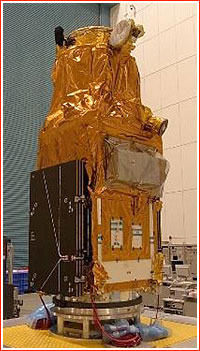
A fully assembled ASNARO satellite in May 2012.
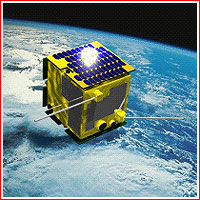
ChubuSat-1
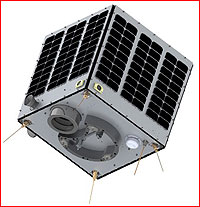
Hodoyoshi-1
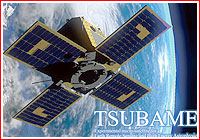
Tsubame
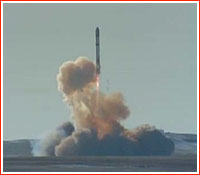
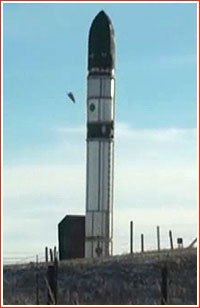
Dnepr emerges from its launch silo on Nov. 6, 2014. Credit: Zvezda TV



